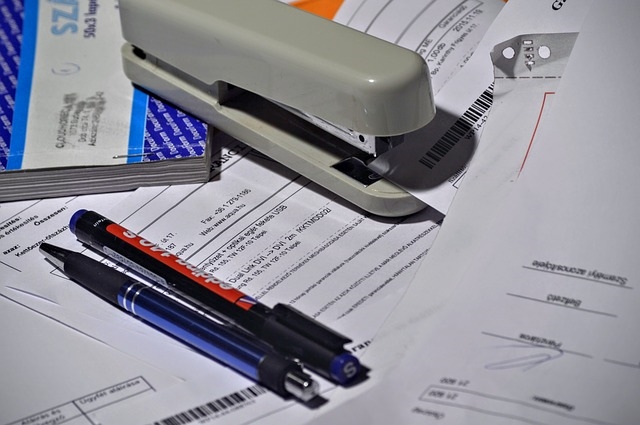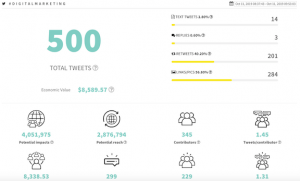— September 19, 2017

cloudhoreca / Pixabay
You just landed a new client. You seem to be getting along well with them. You’ve enjoyed working on the early projects that they’ve sent you. In short, things look promising. That is until it’s time to invoice your client.
Invoicing is a tedious, formal-ish, and frustrating task that’s absolutely essential. After all, if without invoices, you don’t get paid. And when don’t get paid, your business goes under.
Even worse? How can you ask for a payment without coming across as too cold or pushy? This is especially true when billing a new client who isn’t familiar with your invoicing habits and personality.
You can start by following these 10 invoicing tips that not only guarantee faster payments, but will also avoid pissing off that new client.
1. Keep it simple when you invoice your clients.
While you want to appear as professional as possible, there’s no need to make invoicing any more complicated than it already is.
For example, since most people aren’t familiar with payment jargon, such as “net 30” or “due upon receipt,” use simple language that gets right to the point. Instead, writing “net 30” use “30 days,” or “due within 30 days.” Simple, upfront, and it can’t be misunderstood. It eliminates any confusion, and doesn’t make the client feel like you’re trying to make them pull out the online dictionary nor pull the wool over their eyes.
Bonus TIP: You can keep payment terms simple by asking your new client what their billing cycle is so that you’re both on the same page. For instance, if it’s on the first of the month, then that’s when you should send them your invoice.
2. Include all relevant information.
You invoice should always contain the following information:
- Your name
- Your tax ID
- Your address (both your physical and email address)
- Your phone number
- Invoice number
- Itemized breakdown of services or products rendered
- Total amount
- Due date
Including this information will eliminate any questions or concerns that the client may have regarding the invoice. And, if they do have an inquiry, they can easily contact you since you’ve provided all of your contact information.
3. Offer flexible payment options.
Keep your clients happy, and increase the speed of payments, by providing them with the ability to pay your invoice with their preferred payment method.
Most invoicing platforms offer a wide-range of payment options when paying an invoice, such as credit cards, electronic funds transfer (EFT), Automated Clearing House (ACH), or cryptocurrencies like bitcoin.
4. Send automated reminders and updates.
Don’t wait until a payment is past due to get in-touch with your clients. Using cloud-based invoicing software allows you to send automated and friendly payment reminders and updates whenever an invoice is approaching its due date.
This way the client can stay on-top of their account status without getting penalized with a late fee. This encourages on-time payments, it also reduces the awkwardness of follow-ups.
Even better, if this is going to be an ongoing project, you can set-up recurring payments with the client so that neither one of you forget about the invoice.
5. Customize each of your client’s invoice.
Personally, I can’t stand generic messages. They’re not only impersonal, they’re incredibly easy to overlook. If I feel that way, then just imagine how your client feels when they open up that bland, cold invoice that has little-to-no details.
Sending customized invoices that include the client’s name, contact information, requested payment information like purchase order (P.O.) number, Employer Identification Number (EIN), and a breakdown of services makes them feel like a VIP since you took the time to customize the invoice.
But, you can always go a step further and add a little more personalization by including a handwritten “thank you” note, or include a link to a piece of content that the client could find valuable for their own type of business. For example, if they mentioned that they’re interested in bitcoin, send them an introductory article that explains this cryptocurrency.
6. Offer incentives.
This is a simple, and effective way, to motivate your client to pay the invoice on-time. Besides, it makes them special. Even if it’s a discount of just 2% off the total amount of the invoice is enough to motivate the client to make a payment.
On top of offering a discount, you can incentivize your client’s through:
- Discount off of future work.
- Store credit
- Offering a gift certificate to a partner’s products or services.
- Promotional swag.
7. Make them feel valued.
We’ve alluded to this strategy several times, but if you want to keep your clients happy, then make them feel valuable.
This includes everything from:
- If they recently had a promotion or birthday, acknowledge that in the message section of the invoice.
- Give them personal attention.
- Always saying “please” and “thank you” on your invoices.
- Listening to their feedback or suggestions.
- Mentioning your current offers.
8. Don’t surprise your clients.
If you realize that a job is going to require more time, effort, or materials, let them know about this as early as possible. Any change in the job status usually means it’s going to increase the cost of the project. You’ll want to be available to discuss this change immediately with your client so that they’re not blindsided when they open the invoice.
Be as detailed and transparent as possible during this discussion to prevent any surprise. If the client is alright with these changes, make sure that you get it in writing. Some clients may feel a little offended by having to put something in writing.
Sometimes if you write up the information and they just have to sign off on the new estimate, it is easier for both of you. Whether you write the invoice up or they do, include the original costs and then the out-of-scope” costs.
9. Be crystal clear.
Explain everything with the client in advance and be as detailed as possible in your invoices. For example, if you don’t include a prominent due date or preferred payment method, you can’t expect the client to pay the invoice as soon as they receive it. After all, they don’t know when the payment is expected or how to pay it.
Being crystal clear prevents misunderstandings and keeps the payment process flowing quickly.
10. Never lose your poise.
What if you’ve followed the advice listed above, but the client missed the due date? You’re going to have to chase that payment down. However, do so without getting angry–or “snippy.”
Until you know the circumstances, there may be a simple explanation why the payment is past due. Was the invoice accidentally misplaced or did the client have a family emergency? Don’t burn that bridge with the client because you automatically assume that they’re a deadbeat.
Again, using automation will remind clients when a payment is approaching and will then “ping” the client until the invoice is paid.
If that doesn’t work, get in touch with the client by calling or emailing them and asking them if anything is wrong. If they are a new client and don’t respond, they may not understand your ways of doing business. Still don’t jump to conclusions.
If they are a client you’ve always had this type of trouble with — the tactics may need to change. If they owe you a large amount or are several months behind, you may need to get some legal advice. Sometimes you have to send the invoice to collections. But, that’s a last ditch effort.
While chasing down late payments is frustrating, never lose your poise. Never use threatening or aggressive language.
Give your client the chance to explain themselves, be firm, direct, and upfront about any late fees or implications of missing the due date from the get-go.
Business & Finance Articles on Business 2 Community
(54)
Report Post






